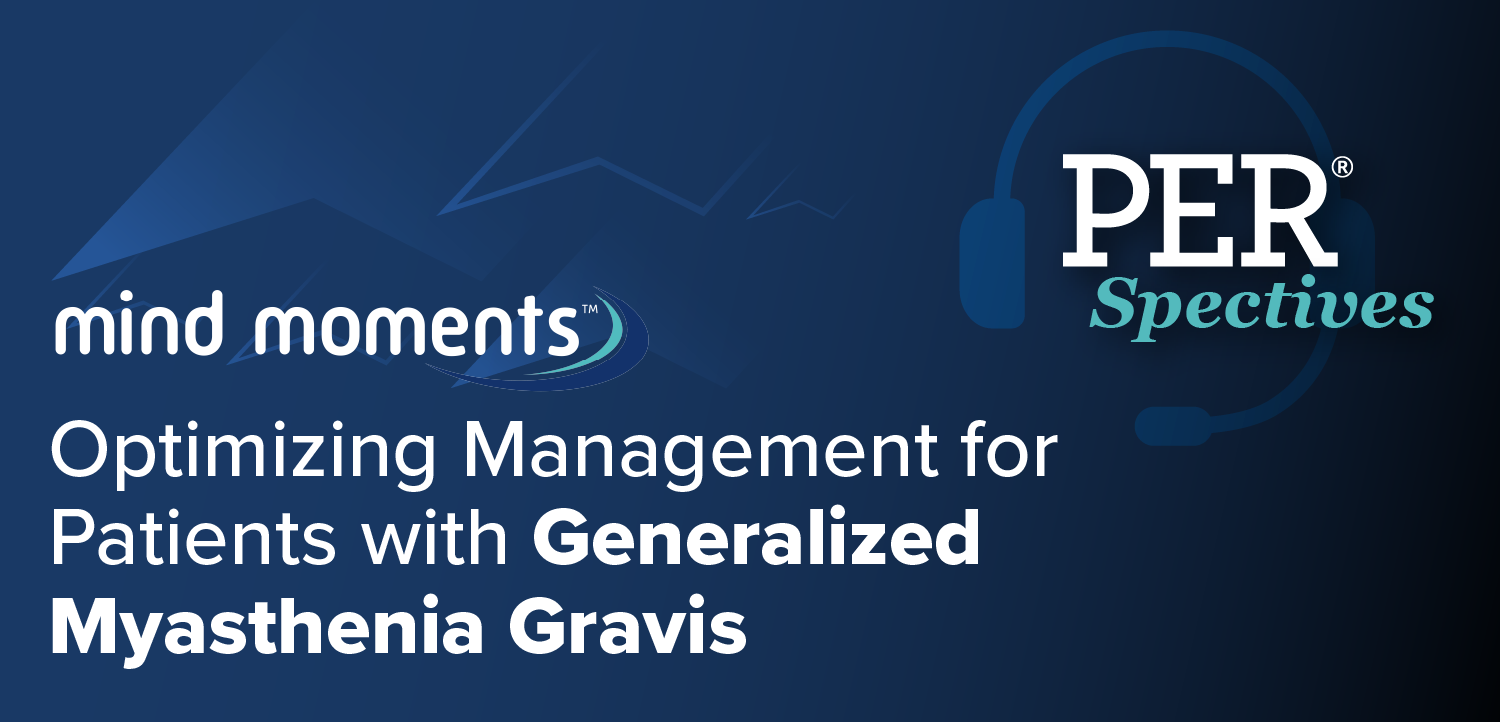
NeuroVoices: Dennis Rivet, MD, on Expanding the Role of GLP-1 RAs to Idiopathic Intracranial Hypertension and Beyond
The Harold I. Nemuth Chair in Neurological Disorders at Virginia Commonweath University discussed the rationale, results, and future directions of GLP-1 RA therapy as a novel treatment strategy for idiopathic intracranial hypertension.
Idiopathic intracranial hypertension (IIH) is a challenging condition to manage, affecting a small but significant portion of the population (1 to 3 cases per 100,000). Current surgical interventions for IIH are often associated with morbidity, high revision, or failure rates. A key characteristic of IIH is its strong link to morbid obesity, with over 80% of cases occurring in individuals with the condition.
A study team led by Dennis Rivet, MD, recently explored GLP-1 receptor agonists (RAs) as a potential therapeutic avenue for IIH, leveraging their proven efficacy in weight loss and their systemic presence. Published in JAMA Neurology, the cohort study leveraged data from the TriNetX U.S. Collaborative Network involving 1110 propensity score-matched patients with IIH, half of which were GLP-1 RA users. All told, use of GLP-1 RAs as management medications led to lower overall medication use, fewer symptoms and signs, and reduced need for procedural interventions over a 1-year follow-up period.
Following the publication, NeurologyLive® caught up with Rivet to get his thoughts and perspectives on the findings, and the potential to expand GLP-1 RAs in the near future. As part of a new iteration of
NeurologyLive: What is the basis behind the idea of studying a GLP-1 RA in idiopathic intracranial hypertension?
Dennis Rivet, MD: Idiopathic intracranial hypertension is not common—about one to three cases per 100,000 in the population—but it’s difficult to manage. As a neurosurgeon, I can tell you the surgical solutions in our field, as well as some other surgical solutions like bariatric surgery, are not ideal. They’re morbid, they have significant revision or failure rates, and even some of the venous sinus stenting procedures that endovascular neurosurgeons like myself sometimes use to treat this disease are far from perfect.
This is a patient population that already has significant comorbidities. The majority—more than 80%—have morbid obesity. So, it’s not a well-treated disease, and it has a major impact on people’s lives.
Another important background point is that every treatment guideline for IIH, or pseudotumor cerebri as it’s also called, universally emphasizes weight loss as part of management. That sounds great, but we all know that advising patients to lose weight is one thing—helping them actually achieve and sustain it is another. It’s very difficult.
GLP-1 receptor agonists are highly effective for weight loss, and they’ve been approved by the FDA for years now. They’re not new. So, there’s a natural synergy between what we know about the disease and what these medications can do.
There’s also already been a pilot trial done in the UK with GLP-1 agonists in a very small population—maybe 20 patients—that showed some promise.
And beyond weight, we know GLP-1 agonists have effects throughout the body. They’re secreted from the GI tract, but receptors exist on multiple tissue types—from the pancreas to the CNS. In the brain, for example, there are receptors in the hypothalamus that regulate satiety, and interestingly, in the choroid plexus, which is involved in cerebrospinal fluid production. That’s important because although the exact cause of IIH is unknown, we do know these patients have elevated intracranial pressures, and medications that reduce CSF production are often effective. So, mechanistically, there’s plenty of reason to hypothesize why they might work here.
The challenging part is designing a trial and finding enough patients. That’s why being able to use a large clinical database was so helpful in asking this question.
Discuss the study at greater length, what were the biggest takeaways?
We identified patients diagnosed with IIH who, within six months of diagnosis, began treatment with a GLP-1 agonist. Using TriNetX, which is a very large clinical database, we were able to identify enough patients, match them appropriately, and build cohorts of just over 500 patients each—555 to be exact.
We then looked at three main outcomes. First, symptoms: most commonly headache, but also visual disturbances. What did patients report after treatment? Second, procedures: did treatment with a GLP-1 agonist reduce the need for CSF shunting, venous sinus stenting, or bariatric surgery? And third, did patients need fewer additional medications once they started a GLP-1 agonist?
The short answer: all three outcomes showed reductions in patients who started a GLP-1 agonist after IIH diagnosis.
We also did subgroup analyses. For instance, we looked at patients with BMI over 40 versus those under 40. Our hypothesis was that efficacy might be even greater in those with more severe obesity. Interestingly, that wasn’t the case—it was effective in both groups, but there wasn’t a significant difference.
We also compared outcomes to bariatric surgery. Bariatric procedures are known to be effective for weight loss and for IIH, but they carry morbidities, regardless of the type performed. In our study, GLP-1 therapy appeared effective without those surgical risks. One unexpected finding was that one-year all-cause mortality was decreased in patients treated with GLP-1 agonists, but we didn’t see the same mortality reduction in the bariatric surgery cohort.
Overall, the data suggest that GLP-1 therapy is effective for symptoms, reduces procedural burden, decreases medication use, and may even confer survival benefits.
What specific GLP-1s were used in the trial? And do you see any reason to prefer one over another?
There were six GLP-1 receptor agonists represented: lixisenatide, albiglutide, dulaglutide, semaglutide, liraglutide, and exenatide. So, both older and newer agents.
We wanted to capture as many treated patients as possible, so we didn’t narrow it to just one agent. Because this is a worldwide database, practice patterns differ across countries and healthcare systems. We don’t have the granularity to say whether one agent is superior, but practice trends may guide what gets used moving forward.
For example, older agents like exenatide are falling out of use in North America and Europe. Newer generations, especially combination agonists that work on GLP-1 plus other receptors, are rapidly gaining ground. The field is evolving quickly, so I don’t think we can say yet whether a particular drug is best for IIH.
You mentioned next steps earlier. What do you see as the next phase of research here, and what might a larger trial look like?
The obvious next step would be a randomized controlled trial. A retrospective database analysis, while useful, has limitations. A trial would address those and provide stronger evidence. That said, IIH is a relatively uncommon disease, so we wouldn’t need trials as massive as those in diabetes or heart failure. A more targeted trial could be feasible.
The other point, though, is that many patients with IIH already have on-label indications for GLP-1 agonists—like diabetes or obesity. That raises the question of whether a formal trial will ever be done. Because even without one, clinicians might increasingly prescribe GLP-1s for IIH, knowing they’ll also benefit the patient’s metabolic health and reduce cardiovascular risk, beyond their possible benefit in IIH.
So, while a trial would be ideal, this study may already influence clinical practice by reinforcing the idea that GLP-1s could be a good first-line option before older drugs like acetazolamide, which have more side effects.
Beyond IIH, do you see any other neurological or cardiovascular conditions where GLP-1s could have potential?
Yes, definitely. Some signals are already emerging. GLP-1s are being studied for Alzheimer disease and other neurodegenerative disorders. Tirzepatide was just approved for obstructive sleep apnea. But there are two other areas that I think are really intriguing.
First, secondary stroke prevention. If you look at current strategies—antithrombotics, statins, blood pressure control—they help, but the number needed to treat to prevent a recurrent stroke is still quite high. We need better tools. GLP-1s could be an interesting option for patients who have had a stroke or TIA and also have risk factors like diabetes, heart failure, or obesity. That’s a huge patient population.
Second, inflammatory conditions. No matter what indication GLP-1s are prescribed for, inflammatory markers like CRP go down, often before weight changes occur. That raises the question of whether they could help in conditions like psoriatic arthritis or other inflammatory disorders. That’s something I’d love to explore further using retrospective datasets.
Transcript was edited for clarity.
Newsletter
Keep your finger on the pulse of neurology—subscribe to NeurologyLive for expert interviews, new data, and breakthrough treatment updates.




































